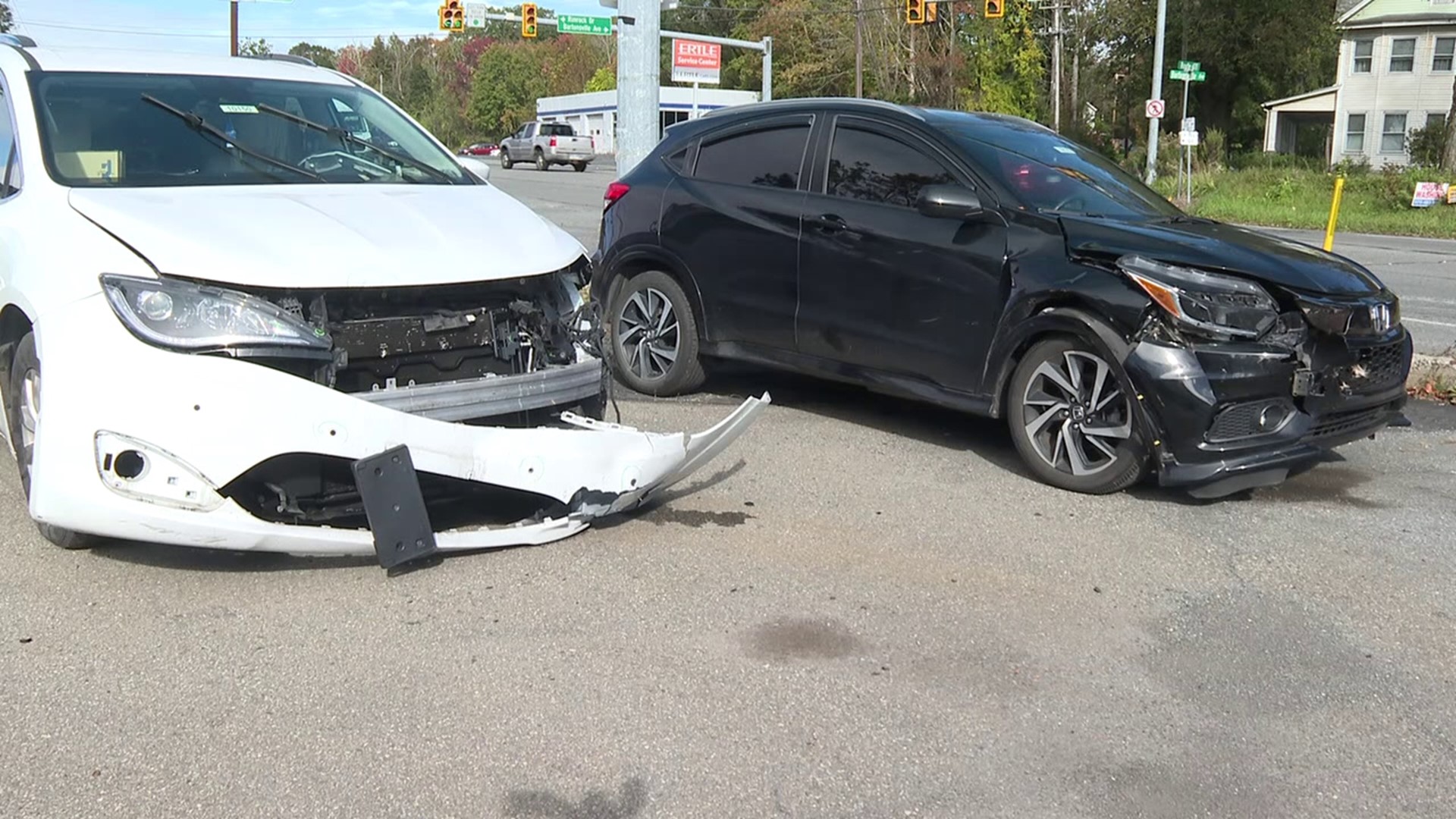MONROE COUNTY, Pa. — Deer hair remains stuck in the bumper of this SUV outside Advanced Collision on Route 611 in Pocono Township, Near Bartonsville.
Owner Steve Jurasits says it's not the first vehicle to come in recently with damage done by a white-tailed deer.
"So far, I'd say at least 15 to 20, and it just started. Yeah, it could range anywhere from just a headlight to a whole front end. You know it can go from a $200 repair to a 6 to 7-thousand-dollar repair, and you don't need to be going fast to get a lot of damage," said Jurasits.
Travis Lau with the Pennsylvania Game Commission says we're not even in deer mating season yet, also known as the rut, which typically starts in mid-November.
"Every day from now until the peak of breeding, deer activity will be ramping up. Deer vehicle collisions that are associated with the whitetail breeding season actually happen before the peak of breeding because that peak of breeding is actually when bucks and does are together," said Lau, the Pennsylvania Game Commission Communications Director.
With several cars already coming in with deer damage, Jurasits says it's important to know what to do if you hit a deer or another animal out on the road.
What to do if you hit a deer
"You want to contact your insurance company and make sure you have the right coverage on your vehicle I'm getting a lot of people in that aren't 100% sure what's on their policy, and if you do run into an animal and your vehicle's tied up for a while, you're going to be without a car and if you don't know what's on your policy you're going to be in a tight situation," Jurasits said.
Tips to prevent deer collisions
State Farm, the largest insurer of cars in the U.S., has some tips to help you avoid deer collisions while driving:
- Slow down, especially if you see an animal close to the road.
- Stay alert. Scan the road for animals at any time of the day or night.
- Pay attention to “deer crossing” and other animal signs.
- Reduce distractions. Put the cell phone away.
- Brake as necessary. If you can avoid hitting the animal, reduce your speed, honk your horn and tap your brakes to warn other drivers.
- Don't swerve. If a crash with an animal is inevitable, maintain control of your vehicle and don't veer off the road.
- Use high beams. Flicking your high beams on wildlife may cause the animal to scurry away.
- Be aware of peak season. Animal crashes, especially deer, happen most often during October through December, which is hunting and mating season.
- Watch for animals on the road between dusk and dawn.
- Watch for herds. If you see one deer, there are probably more nearby.
"Know that deer often do travel in groups, so even if one deer crosses the road in front of you, there may be others on the way. Pay particular attention to areas that are marked with deer crossing signs. They're placed there because they're known areas of high travel for deer, and you know to rely on your own instincts," Lau said.
The rut lasts through at least the end of November.

